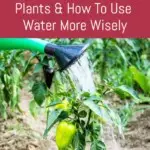
Water is one of the most important factors – not only in your garden but on this planet. Life as we know it would not be possible without this vital element.
Unfortunately, too many of us, especially in the developed world, take it for granted.
When you are used to having water on tap, you don’t always take the time to think much about where it comes from, or how you use it. And even when you do consider water use – you might not always make the right decisions regarding water when it comes to your garden.
To explore the issue of how to use water more wisely in your garden, let’s take a look at some common watering mistakes.
By identifying the mistakes, we can find ways to do things better, and manage our gardens in more sustainable ways.
So, with no further delay, here are ten watering mistakes that you should definitely be sure to avoid:
1. Not Harvesting Rainwater to Water Your Plants
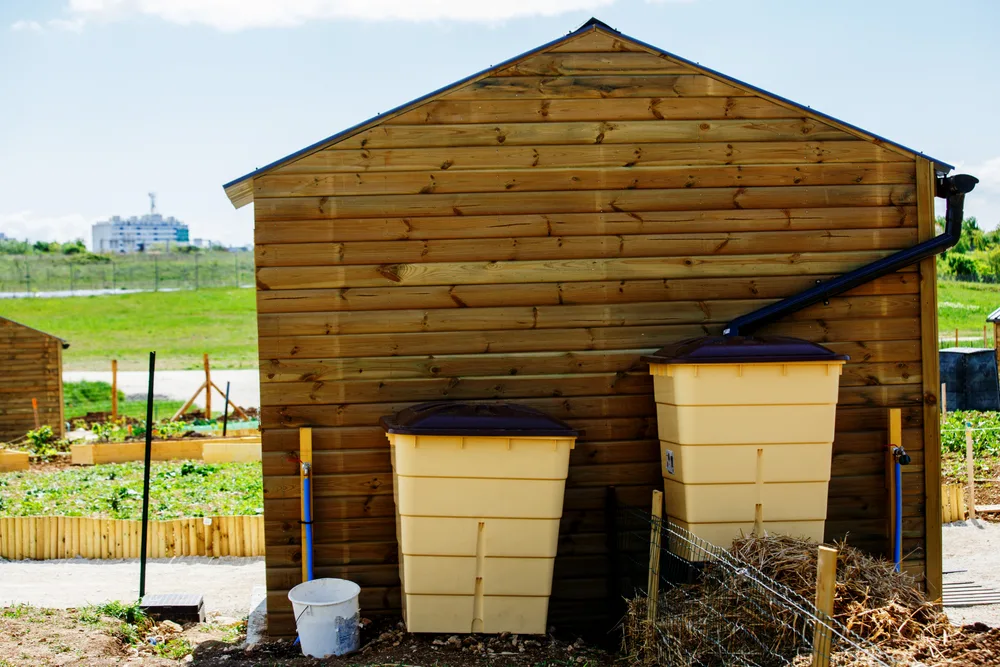
First and foremost, if you have a food producing garden and are not harvesting rainwater you are making a big mistake.
I always advise that before even sowing their first seeds, gardeners should make sure they have the basics in place.
When I say the basics, I mean those core requirements that will ensure the short and longer term viability of the garden. This includes:
- A rainwater harvesting system (collecting rainwater from the roof of a home and other man-made structures), and any other water management features.
- A composting system (to recycle organic materials and return nutrients to the garden system).
- A good layout design and planting plan (that allows for year-round organic growing, companion planting, crop rotation etc..) That layout design should be tailored to the specific site. The planting plan should include a wide range of the right plants for the right places. These should be chosen to boost biodiversity, aid in pest control, and provide a yield.
It is only when we have the basics in place for water, soil etc.. that a gardener should begin to implement their plans and start growing their own food.
Of course, not everyone does things in this order. And even if you have put the cart before the horse, that does not mean that it is too late to put these core requirements in place.
How To Harvest Rainwater
Harvesting rainwater from the roof of your home is easier than you might imagine.
Most homes will already have some form of guttering in place. It your home does not already have gutters to collect water from the roof, a visit to a hardware store and some simple DIY skills are all that is required to add some.
Where guttering is in place, the rainwater is often directed underground, where it meets up with mains sewerage systems. Sometimes, it may simply spill out onto the ground close to your home and run down into storm drains etc..
Directing the water so you can make use of it in your garden can be achieved in a number of ways. Placing a rainwater diverter and a barrel or rainwater tank close to the downspout is the easiest, simplest option.
But you could also direct rainwater differently. We’ll talk about some of the different ways that you can store, direct and use rainwater for watering needs in your garden as we progress through this article.
Take a look at how Rural Sprout contributor, Lydia, collects, stores and uses rainwater on her hobby farm here.
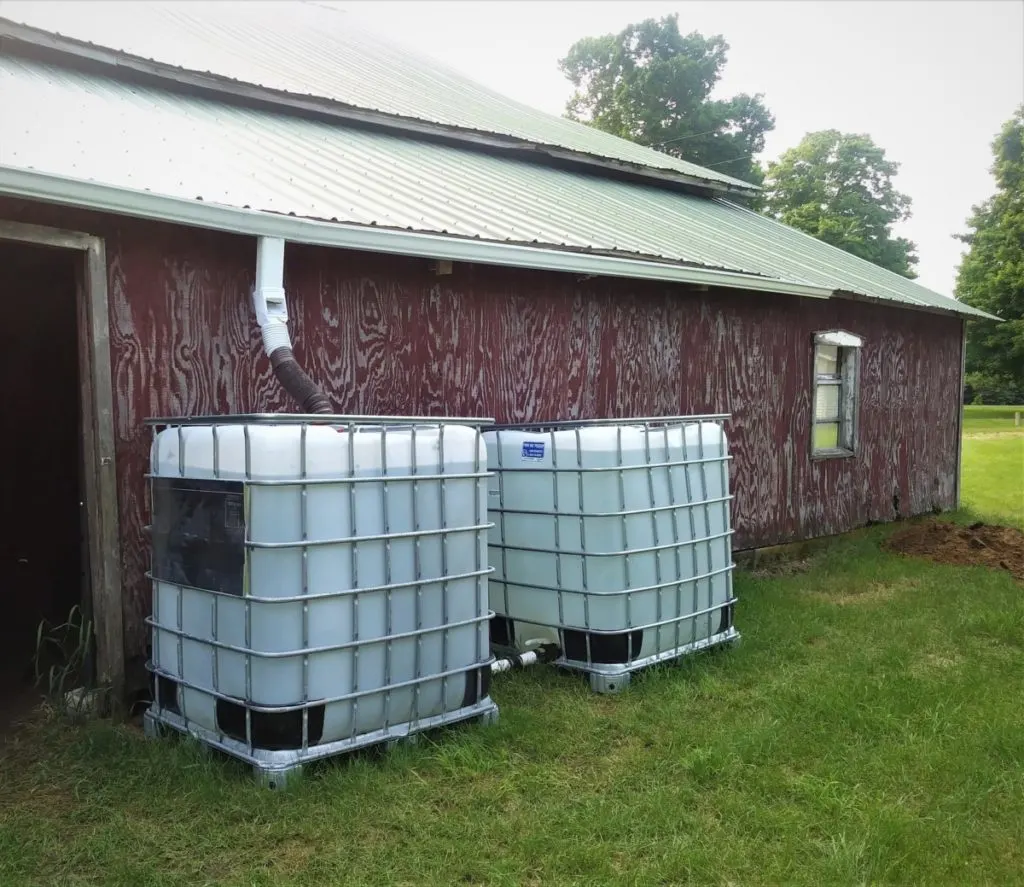
Why We Should Be Watering With Rainwater?
Letting rainwater off your property right away is one of the biggest mistakes you can make. Fresh water is precious. And we should all be doing everything we can to keep it around.
Not only will the water come in handy – especially in areas with lower rainfall during certain times of year. Collecting and managing rainwater on your property can also help prevent problems off your property.
For example, taking steps to keep rainwater around can:
- Prevent potential flooding or waterlogging problems ‘downhill’ from your location.
- Stop pollutants in storm run-off from entering local streams and waterways and making their way into seas and oceans.
Additionally, there are benefits to using rainwater rather than a treated supply. Treated mains water often contains chlorine, which can damage your plants. It may also contain a range of other contaminants, which can build up in the soil over time.
Rainwater is not squeaky clean (and how many contaminants it contains will very much depend on where you live). But generally speaking, rainwater will be better for your crops and your soil than a mains supply.
2. Using Mains Water When Rainwater is Available
You would be surprised by how often I have seen people watering with a hosepipe attached to the mains even when they have a rainwater harvesting system in place, and rainwater available.
You may find it easier and more convenient to use a hose attached to the mains water supply when watering needs are high. But if it is easier, this is just a sign that you have not yet perfected methods for collecting and using rainwater where you live.
Many people seem to add a rainwater tank to collect water from their home, but then give no thought to how that water will make it to where it is needed.
It is important to think not only about how you will collect rainwater, but also how you will store and direct it efficiently and effectively when you come up with your plans.
A good rainwater harvesting system will not necessarily require you to draw of water manually and water by hand with a watering can. A well designed system can be just as easy and convenient as using a pressurized mains supply. You just have to choose the right option or options for where you live.
Water from a rainwater tank in an area with high enough rainfall can be pumped to allow sufficient pressure to water larger gardens with a hose. (And solar powered pumps offer a more eco-friendly solution.) But to reduce the amount of water you use, consider giving up your watering can and hose pipe altogether.
3. Watering By Watering Can or Hosepipe When Other, Better Options Are Available
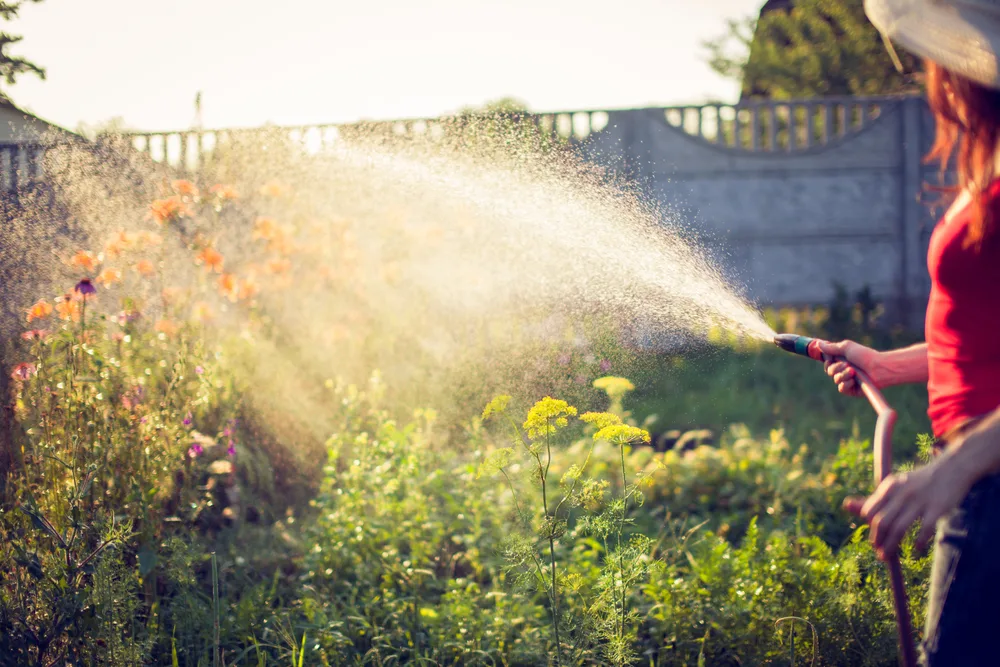
You may be wondering how on earth you can provide water for your plants without using a watering can or hose. But actually, there are a range of solutions that you can consider.
Watering with a watering can is often very time consuming and can be somewhat wasteful of water if you do not direct the water very effectively.
Watering with a hose may be easier, but it is even more wasteful. Watering with a hose (or overhead sprinklers) uses a lot more water than is really necessary.
Instead, consider installing drip irrigation.
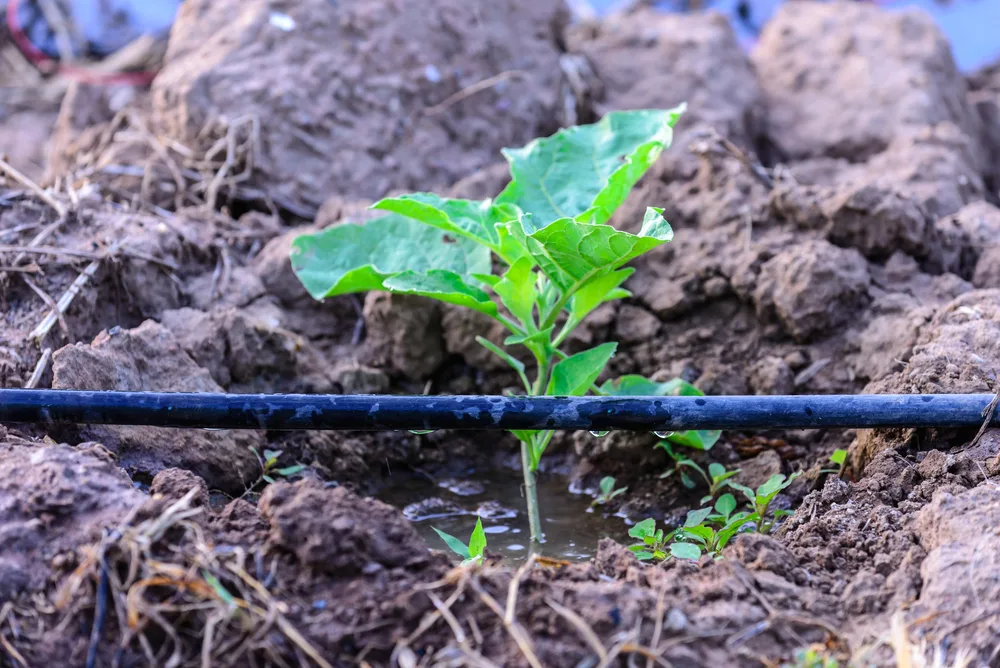
This involves using a leaky pipe that slowly feeds water to the soil around your plants. It can be installed on the soil surface, but may be more effective if it is buried just below the ground, taking water to where it is really needed.
Another option is to direct the rainwater you harvest into specially prepared growing areas called wicking beds.
Wicking beds are raised beds with reservoirs of water built into the base. Water is drawn up from the base through capillary action and becomes available for plants placed on top.
If we are talking about making sure that annual fruits and vegetables get the water they need then this is an interesting option to consider.
4. Missing Out On the Potential of Water-Based Growing
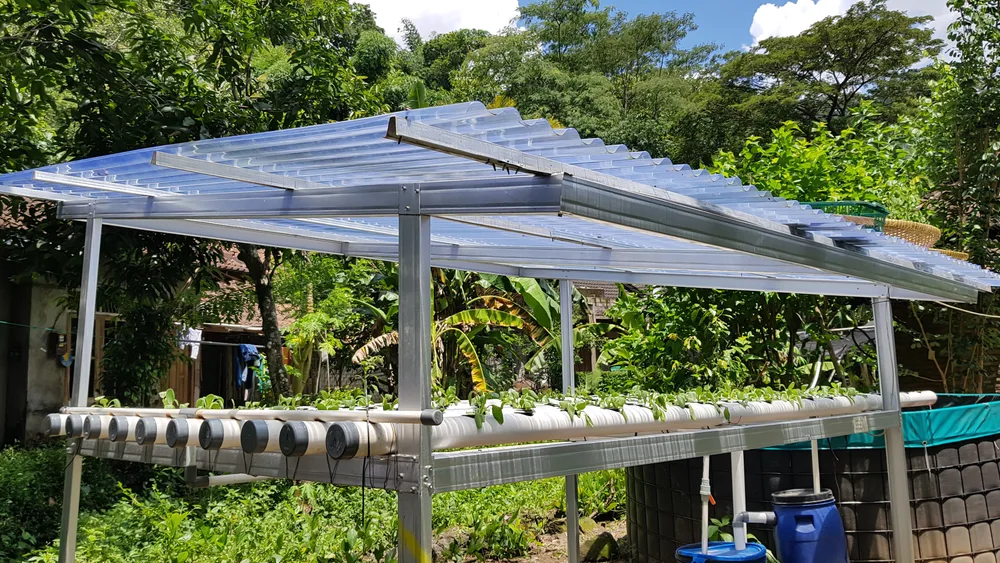
Wicking beds are just one example of a type of growing area that provides an incredibly water-wise solution for home growing.
It is a specific type of bed that is often integrated into hydroponic or aquaponic growing systems.
Wicking beds do usually use a soil type growing medium. But most hydroponic and aquaponic beds don’t use any soil at all.
It may seem counterintuitive. But growing plants in water rather than soil might be one interesting solution if you want to find ways to use less water in your garden. Water in these systems cycles round. And so these systems can use a lot less water than traditional growing systems.
If you live in an area with relatively low rainfall, and have not at least considered hydroponics or aquaponics, then you could be missing out. Any rainwater that you harvest could top up such a system, and then be cycled through it. So you have an integrated set up that won’t require any manual watering at all.
5. Not Taking Steps to Store More Water in Plants and Soil in Your Garden
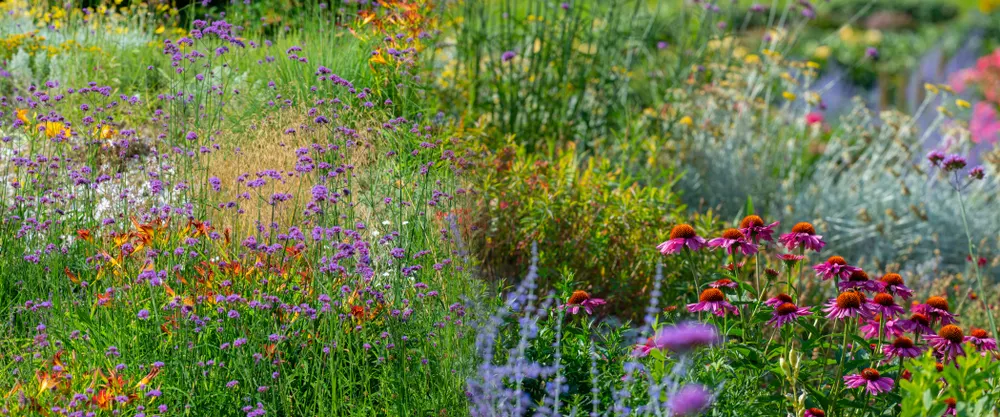
In an organic garden, we should always be thinking about how we can work with nature and natural systems.
One very important thing to think about is how we can store more water in our gardens – not in tanks or other containers, but in the plants and soil themselves.
Taking steps to improve the overall water storage capacities of our gardens can significantly cut down on manual watering needs. If you have not spent any time thinking about this issue, you may be doing more work than you need to. Your garden also may not be as resilient as it could be.
You can increase the water storage capacity by making sure that you have planted relatively densely. And avoided leaving areas of bare soil wherever and whenever possible.
Choosing and growing plenty of trees, shrubs and other perennial plants as well as annual crops can help to boost the water storage potential of your garden over time.
It is also important to increase the water storage capacity of the soil by making sure that you add plenty of carbon organic matter. This might be in the form of composts or manures, as chopped and dropped plant material, or as biochar.
6. Not Considering Other Ways To Reduce Water Use in Your Garden
Earthworks are one other way to make sure water stays in your garden, and to ensure it is directed where you want it to go.
Creating on contour swales, basins and berms can help keep water around, and reduce the amount of manual watering required in certain parts of your garden.
You can also use terracing to slow water flow and keep water around on steeply sloping sites. This too will help to reduce the amount of watering you have to do in your garden.
But while such schemes can be beneficial in many gardens, there is one thing that can aid almost universally in reducing water use – mulching.
If you do not make use of appropriate organic mulches around your plants then it is likely that, especially over the summer months, you are watering more than you need to. It is likely that you will be using more water than is really required.
Adding organic material as mulches, such as wood chips, bark, sawdust or compost is crucial for good water management. This is an important strategy in no dig gardening.
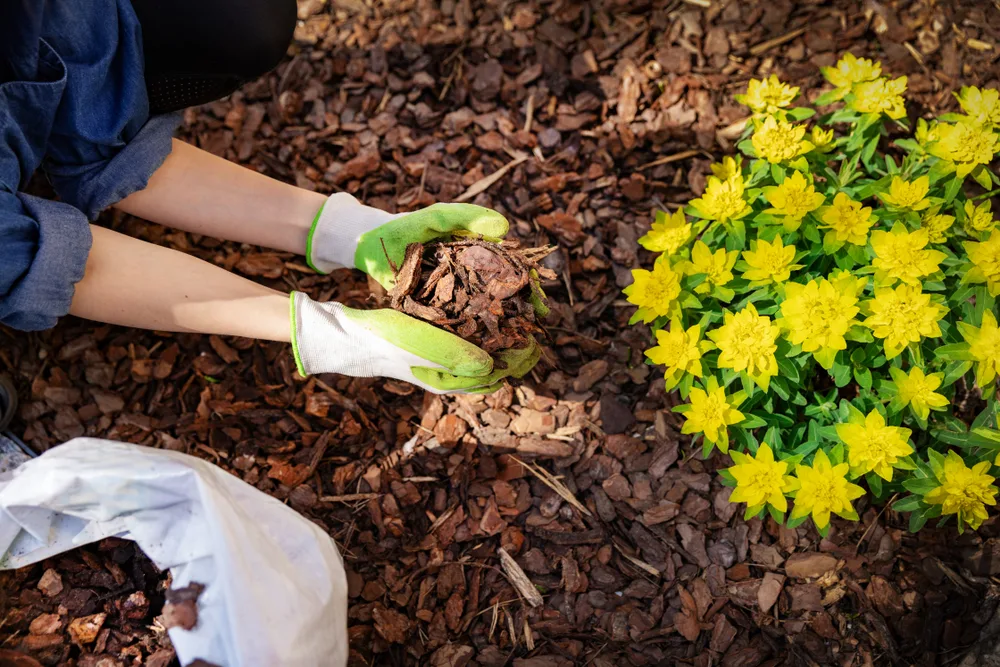
In addition to helping retain soil moisture by reducing evaporation, it can also add nutrients for your plants and keep soil healthy.
Another almost universally applicable way to use water more wisely regards plant choices. Of course, certain plants require much more water than others. So choosing drought-tolerant plants with lower watering needs is important in low rainfall areas.
Plant choices can also be important in other ways. For example, by planting trees or other tall plants, you can create shade, which will reduce watering needs. You might also reduce watering needs by using ground cover plants.
7. Damaging Plants and the Soil Ecosystem By Watering Too Much
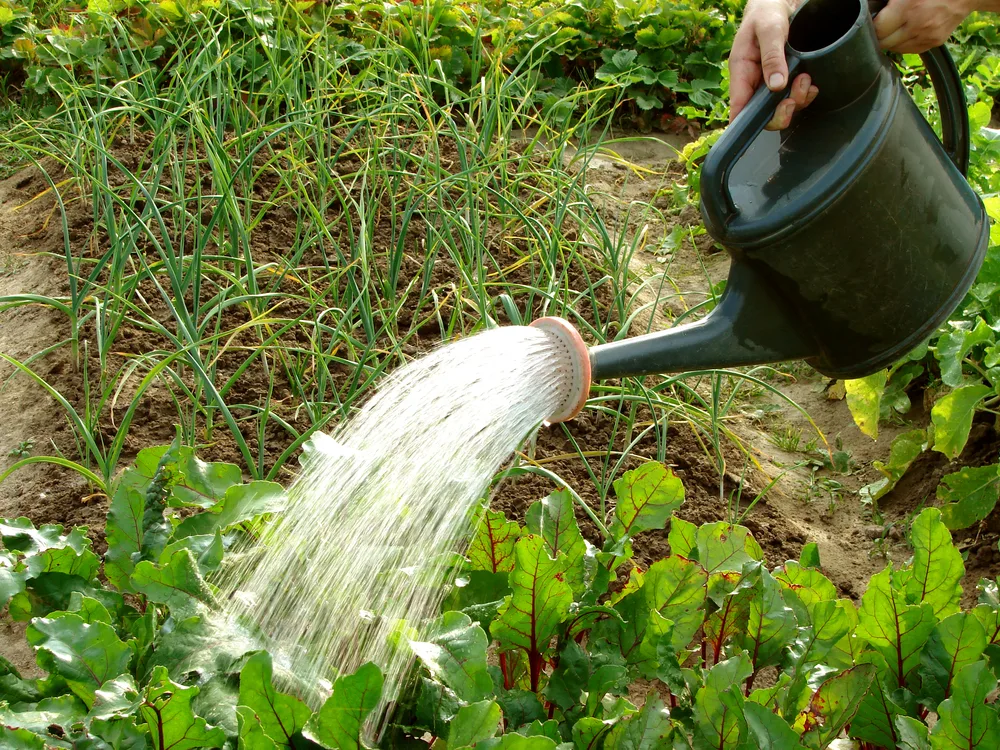
So far, we’ve looked at some of the mistakes you might be making when it comes to general gardening systems and practices. But no matter which watering systems you choose to use in your garden, your own watering may leave something to be desired.
You may be watering by hand. Or you may have implemented systems to lessen the workload. But one common mistake that can occur in either scenario is overwatering.
It is very common for new gardeners to over-estimate the amount of water that their plants require. Like ‘helicopter’ parents, they tend to hover over their gardens and intervene too frequently, or too much.
When plants are overwatered, they can be more vulnerable to pests and disease problems. Root rot and other fungal problems will more easily take hold when the soil or growing medium becomes wet and waterlogged.
Waterlogging can also cause soil compaction, and plant roots may not get the oxygen they need. Plants may rot around the crown or stem if they sit in standing water.
New gardeners often forget that different plants will require different amounts of water. It is important to understand the water needs of the plants you are growing.
It is also important to remember that watering needs will vary considerably depending on what the climate and weather conditions are like where you live. Remember, plants generally require much less water during the winter months in temperate climate gardens.
You also need to think about your soil type. Clay soils are much less free-draining and more prone to waterlogging. So overwatering is more commonly an issue in areas with heavier and less free-draining soils.
8. Damaging Plants and the Soil Ecosystem By Watering Too Little
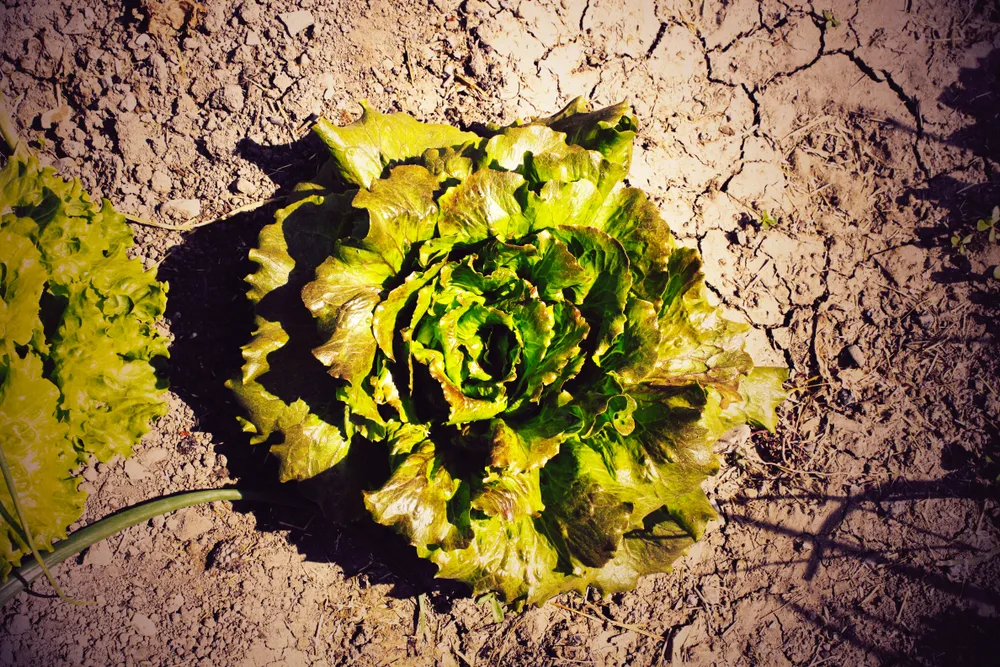
Of course, the reverse can also be a problem. Another common watering mistake is watering too little.
Watering is a delicate balancing act. You need to take into account the plants you are growing, the climate and weather conditions, and your soil.
Even relatively low-water need, drought tolerant plants do require some watering during establishment. And where rainfall is low, you will need to make sure that you, as the gardener, meet water needs. It is also important to remember that during hotter weather, most plants require that you increase watering levels.
Plants grown undercover can be particularly vulnerable. So under-watering is something you definitely need to look out for if you are growing indoors or in a greenhouse or polytunnel. Remember, when rainfall cannot reach plants naturally, you will need to deliver all they require.
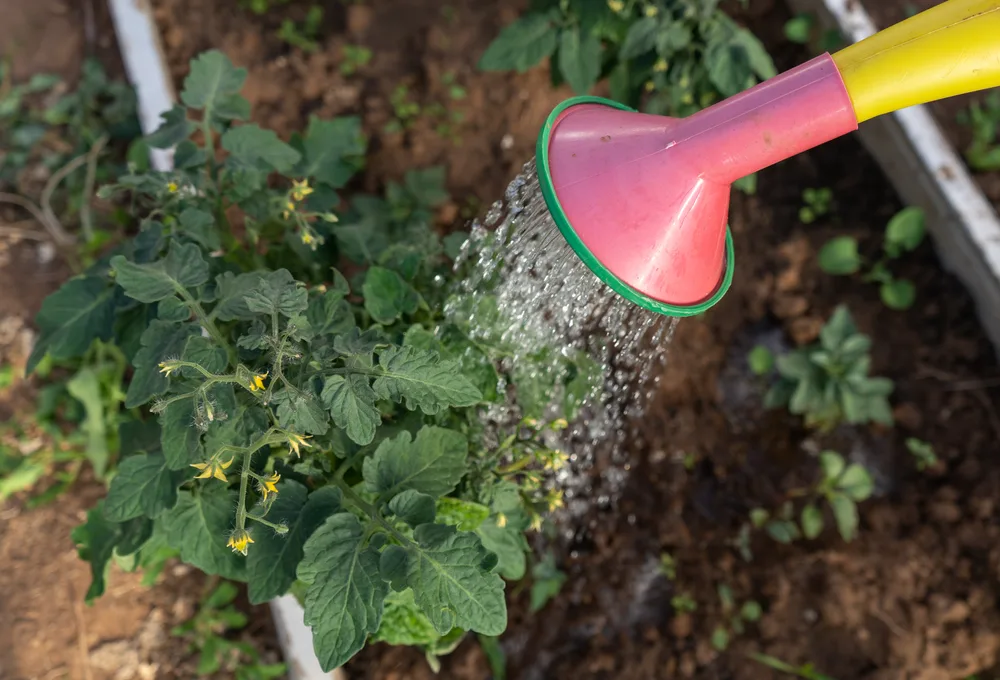
Another thing to remember is that plants will need more water if you are growing them in pots or containers. Watering too little is a common problem in container gardens.
If your soil is very light and free-draining, watering too little is often a common mistake. The more free-draining your soil, the more water plants will require.
Plants that receive too little water will usually be under more stress, which again, makes them more vulnerable to pests or disease.
9. Not Delivering Water to Where it is Needed (By Plant Roots)
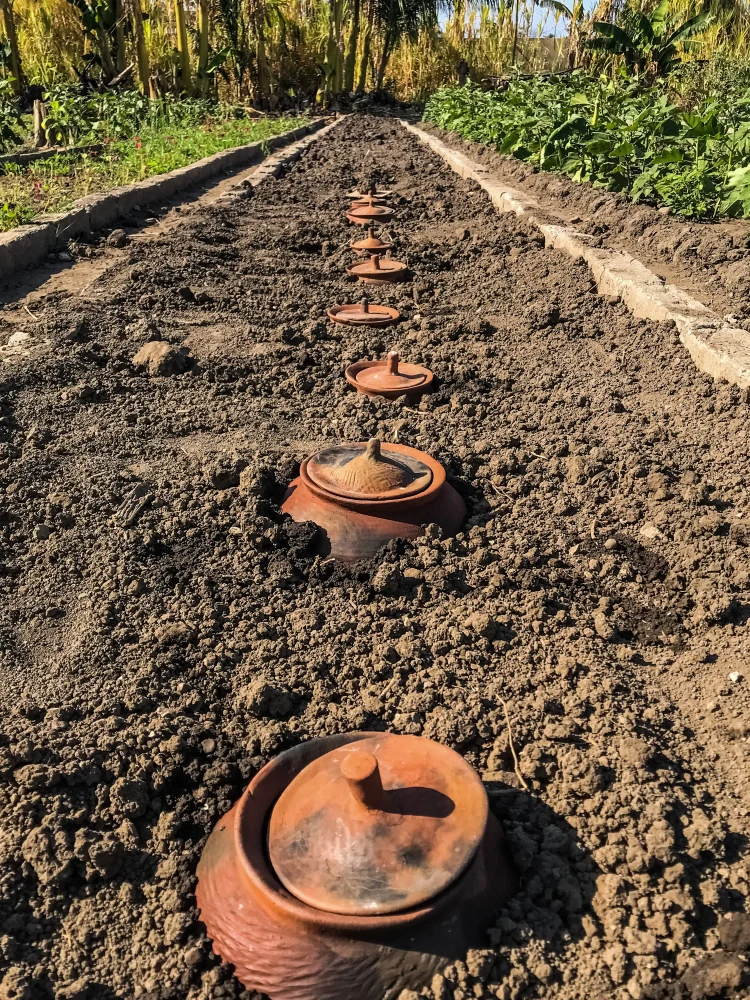
The number of gardens who water from above, spraying water over plant leaves, is astounding. This is another of the most common watering mistakes. Remember, most plants uptake water through their root systems, below the soil.
When we water from above, much of the water we utilise evaporates. Or it is otherwise lost before it actually makes it to where it is needed.
It is very important to deliver water (whichever systems and methods we employ) to where it is actually needed. This might mean simply watering carefully by hand around the base of plants.
It might also involve finding ways to actually deliver water below the soil surface – such as through drip irrigation (as mentioned above). It might also mean burying clay pots or other vessels in the soil close to plants, so we can pour water into them that can slowly be released into the soil.
10. Getting Plant Foliage Wet and Increasing the Risk of Disease
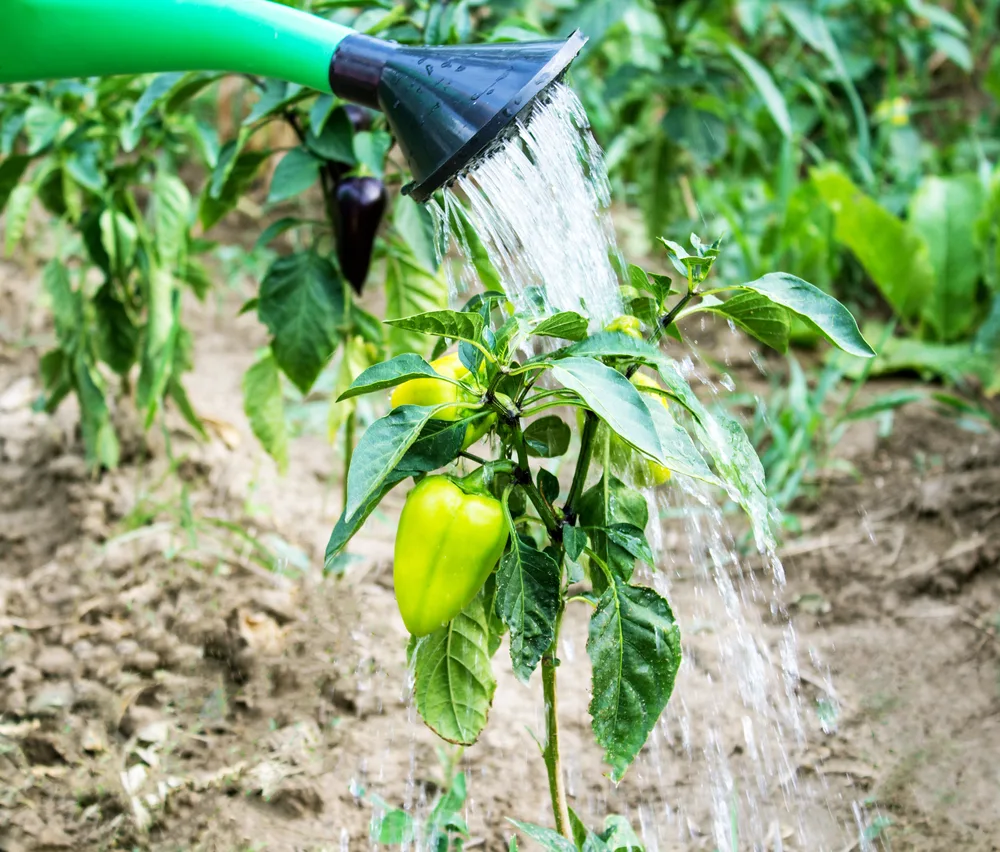
Finally, watering from above does not just waste water. It also wets plant foliage. With many plants, this can increase the risk of disease.
When leaves stay wet, they are, for example, often much more likely to succumb to fungal infections. In hot, sunny weather, water in leaves can also lead to scorching of the foliage.
Watering from below is an important strategy in managing disease. So not taking steps to keep foliage free from water droplets is another of the watering mistakes to avoid.
By avoiding these ten watering mistakes described above, you can create the right systems and improve your watering methods.
These are crucial things to consider if you want to ensure the longevity of your plants, and the long-term health of your garden.

Get the famous Rural Sprout newsletter delivered to your inbox.
Including Sunday ramblings from our editor, Tracey, as well as “What’s Up Wednesday” our roundup of what’s in season and new article updates and alerts.


